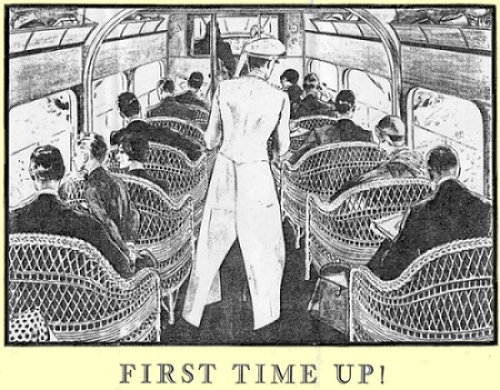First Time Up!
Today, our first airplane ride. The University of Houston's College of Engineering presents this series about the machines that make our civilization run, and the people whose ingenuity created them.
Back from a flight to the east coast, my ears ringing, my back stiff. And I find a listener has sent me two Ford Motor Company ads from the 1928 and 1931 issues of The American Boy. One bears the banner First Time Up! Ford offers us our first airplane ride.
During the late 1920s, flight matured. Airplane builders began shifting away from racing, barnstorming, and record-setting. Airplanes were about to begin serving the public. As flight left its rowdy childhood behind, one of the first great commercial airliners was the Dutch Fokker Trimotor. It carried eight passengers and had a range of 1600 miles.
Henry Ford took an interest in the Trimotor. He bought one for Admiral Byrd to make the first flight over the North Pole. In 1926, Ford acquired the Stout Metal Airplane company. He hired a designer to make a new version and began producing Ford Trimotors. They carried ten to fourteen passengers. Their range was much less than Fokker's, but Ford meant to serve a growing network of American airports, placed only a few hundred miles from one another.
Now he promotes his airplane with a lyrical account of the texture of commercial flight. That First Time Up! line reminds us that most people had yet to fly. Over its eight-year history, Ford made fewer than two hundred Trimotors. Compare that with almost eleven thousand of the DC-3s that followed it. The superior DC-3 was needed to make flight become commonplace. But, in 1928, Ford says:
You settle back in your wicker chair a little nervously as the engines roar. Then a burst of speed across the flying-field! Forty miles an hour ... fifty-five! Someone shouts, 'Watch the wheels!'
(The landing gear didn't retract. The undercarriage was fixed for all to see, below the two flanking engines.)
We're told that, far above the ground, the fear of heights won't touch us, because we lose touch with Earth's lines of perspective. We are told that we're now transcending human nature.
The earlier ad shows ten moveable wicker chairs, like a cozy living room. In 1931, they're replaced with the first generation of today's passenger airplane seats. But, in each case, a liveried steward serves passengers wearing fancy dresses and formal suits. No seat belts, of course; this, after all, is safe transportation.
Indeed, we're told that if one engine fails the airplane can still fly. If two fail, it can still find safety in a region the size of Delaware. If all three go -- well, the plane can glide for miles.
That's off-putting stuff to put in advertising copy, the first ad also includes lines like this: "You may dismiss the tireless beat of the propellers [and gaze down at] rivers the color of green onyx." Only three years later that begins shifting: we're told that airplanes can get us to the next city ahead of business competitors.
Wouldn't it be a glorious thing to forget what we now know -- to go back to experience all that for the first time -- to see it, once more, with no idea of how it would all play out.
I'm John Lienhard, at the University of Houston, where we're interested in the way inventive minds work.
(Theme music)
"First Time Up!" and "Your Place ..." two versions of a Ford Motor advertisement in The American Boy magazine: September, 1928, pg. 31, and April 1931, pg. 49.
I am grateful to Jim Coffeen for providing these fascinating old windows into early commercial flight.
